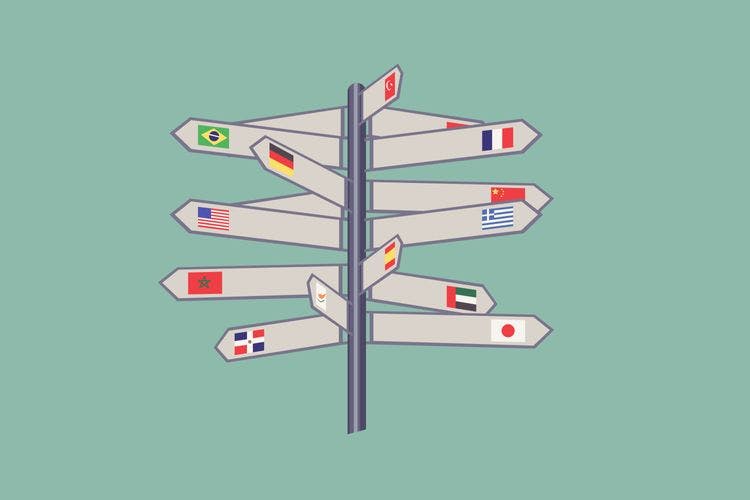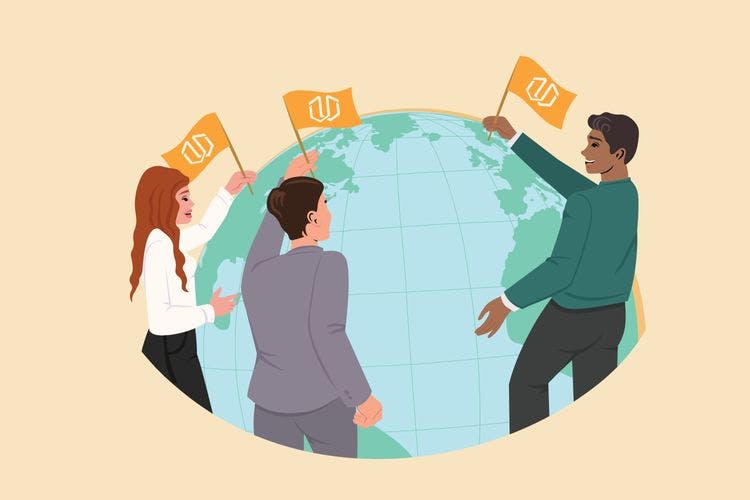German Language Wonders: A Tour Through German-Speaking Nations


You will get a promo code with a discount for our app courses after reading this article.
Contents
German connects different nations in Europe. Germany and Austria are the most well-known, but Switzerland, Luxembourg, Liechtenstein, and parts of Belgium also feature this rich tongue. Each country has its own charm and traditions, yet the German language binds them together. Both similarities and differences are worth exploring, and this article will take you on a journey through these regions. We’ll look at how many people speak German and how it shapes their day-to-day lives.
History of the German Language
The German language traces its roots back to ancient times. The earliest forms, known as Old High German, appeared around 500 AD. They came from tribal languages spoken by various groups in what is now Germany and Austria.
By the Middle Ages, Old High German had changed into Middle High German. This period saw poets like Walther von der Vogelweide use the language for their works. Modern Standard German came about during the Early Modern period (around 1500). Influences included famous figures like Martin Luther, who translated the Bible.
In the 19th and 20th centuries, economic growth and global events spread German further. Germany became one of Europe’s leading nations, influencing arts, science, philosophy, and industry worldwide.
Today, the language has various dialects but remains largely unified by its Standard form. If you are interested in how many people speak German as their first language, you might be surprised to learn that it’s spoken by over 95 million people. 10–25 million speak it as a second language, and 75–100 million as a foreign language. Also, schools teach it in many European countries and beyond.
List of German-Speaking Countries
German is a widely spoken language with native speakers in many countries. It isn’t just limited to Germany or Austria. Various nations around Europe have communities where this tongue plays an essential role. In this section, we will look at how many countries speak German and explore its influence.
Germany
Around 80 million people speak it as their first language in Germany. While this form is used in the media, schools, and government work across the country, local dialects play a big role in daily life.
You will hear different kinds of German in various parts of the country. For example, Bavarian is common in the south, while you might overhear Swabian or Berlin dialects in other regions. These local variations can have different sounds and words compared to Standard German (Hochdeutsch).
Around 67% of Germans know at least one foreign language. So, many people can easily switch between German and another tongue, often English or French.
Austria
It is one of the Germanic countries where German is the official language; about 8.5 million people use this tongue. The Austrian variation has its own style, different from the language spoken in Germany. These differences show up in vocabulary, pronunciation, and even grammar.
In Austria, you will notice local variations of the language. For example, Viennese German is common in the capital, known for its lively and often humorous tone. In rural areas like Tyrol or Carinthia, the dialects are more conservative and closer to Bavarian German.
Switzerland
This country has four national languages. German leads the way, spoken by about 60% of people. Swiss German dominates in central, northern, and eastern areas.
The country’s other main languages mirror its borders. French comes from the west, and Italian spreads through a region in the south. Each canton has its own rules on language use. Seventeen out of twenty-six cantons accept German as their official tongue; nineteen mostly speak it.
Luxembourg
This small nation in Europe has about 661,000 people. While Luxembourgish is the main language spoken by most of the locals, German plays a big role as well.
Luxembourg’s unique position between Belgium, Germany, and France influences its linguistic diversity. About 78% of people speak German in this nation. French enjoys an even broader reach, with 98% of the population fluent in it.
Liechtenstein
This tiny nation is also among countries around Germany where German has an official status. With only 62 square miles, it’s easy to overlook but worth knowing about. The population here is just 40,000 people, which is one of the smallest countries in Europe.
German is the national language for most residents. About 86% use it as their first language, and another 6% speak it fluently, even if it’s not their mother tongue. Different varieties exist within its borders. Around 75% of residents use Swiss German. Other dialects, like Alemannic and Walser, also find use among locals.
Belgium
If you wonder what countries speak Dutch, Belgium is one of them. But German is also used here. Just under 1% of the population speaks it as their first language, but 22% speak it as a second language.
Most of these people live in the eastern part of the country, near the border with Germany. This small region in eastern Belgium is part of the Liège province in Wallonia. The German-speaking community has its own parliamentary government and covers nine municipalities. The population here is around 78,000.
7
Other German-Speaking Countries Around the World
German spread beyond Europe into other parts of the world. Immigrant communities have brought their language to new places and made it part of their lives. From South America to Africa, various regions feature strong German-speaking groups. Let’s explore what countries speak German around the world.
| Country | Continent | Capital | German speakers | Distribution |
|---|---|---|---|---|
| United States of America | North America | Washington, DC | 2,009,000 | 0.6% |
| Brazil | South America | Brasília | 1,082,000 | 0.5% |
| Kazakhstan | Central Asia | Astana | 617,000 | 3.1% |
| Canada | North America | Ottawa | 521,000 | 1.3% |
| Poland | Eastern Europe | Warsaw | 477,000 | 1.3% |
| Italy | Southern Europe | Rome | 294,000 | 0.5% |
| Romania | Eastern Europe | Bucharest | 76,000 | 0.4% |
| Hungary | Eastern Europe | Budapest | 67,000 | 0.7% |
Interesting Facts About the Countries That Speak German
German-speaking nations have many unique and special traits. From scenic landscapes to rich cultures, each country offers something different. You will find interesting customs, impressive history, and much more. Below, we will explore some facts about the countries where the German language is used:
- Germany has many dialects across its regions, making every visit a lesson in different forms of speech.
- With over 20,000 castles, Germany provides countless opportunities to step back into history’s majestic settings.
- Austria’s stunning Alpine scenery invites locals and visitors to ski or hike while viewing breathtaking landscapes.
- Vienna is the world center for classical music, with roots from great composers like Mozart and Beethoven.
- Switzerland has four official languages: German, French, Italian, and Romansh.
- A vital finance hub, Luxembourg impacts not only Europe but global markets.
- Despite being small geographically, Liechtenstein boasts high per capita income, which makes it a wealthy nation with beautiful mountain landscapes.
- Belgium is famous not just for its chocolate but also for having over 1,000 different kinds of beer. It’s a food lover’s amusement park.
These facts show how diverse and captivating the German-speaking countries are. The rich languages, cultural practices, and notable landmarks make each place one of a kind.
Promova: Learn Languages at Your Pace Online
Promova is a one-stop solution for language learning. Master German, English, French, and more with our guided courses designed to fit your skill level and schedule. Here’s what makes Promova special:
- Short sessions. Fit lessons into any part of your day. Cover main points like new words and phrases used by native speakers.
- Interactive quizzes. Test your knowledge with quizzes that help you stay focused. See where you need more practice.
- Progress tracking. View how much you have learned over time. Gain motivation from seeing improvements.
- Mobile app. Access our courses anywhere on Android or iOS devices.
Study when it suits you best with Promova. The real-life examples in lessons let you use new skills right away. This makes learning practical and relatable, helping you use what you’ve just discovered in daily talks.
Check our blog to complement our courses. It has useful tips and cultural facts that deepen your bond with the language. You can explore popular German learning books, memorize some common phrases in Spanish, or discover fun facts about French traditions.
Conclusion
German-speaking countries in Europe and beyond show how this language has a lasting impact. It links millions of people and affects their everyday lives. Whether you go to Germany, Austria, or another place where German is used, each spot gives unique experiences that share a common tongue. Learn the language to immerse yourself in these cultures.
Use your discount and learn languages with Promova
Start learningFAQ
Does formality matter in German language?
Formal language matters a lot when talking to others. Using Sie [ziː] (you) instead of du [du] (you) shows respect. The average German person cares a lot about these small details in daily chats.
Is German hard to learn?
German has some tough grammar rules, like case endings and word order. But if you speak English, you will spot many similar words. Regular practice can help you get better over time.
How important is it for German speakers to know English?
English is key due to global business links and media reach. People in these countries usually know at least basic English, and many speak it well.



Comments